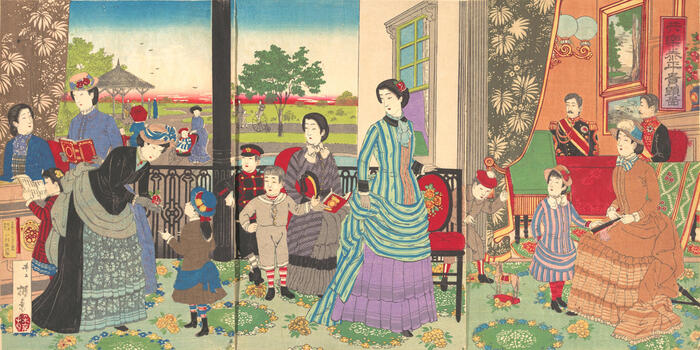NEW YORK - In the beginning it was a T-shaped dress, with straight lines, which reaches up to the ankles.
But over the centuries the kimono, the traditional Japanese dress, has evolved establishing a bridge between East and West, even becoming part of the fabric of various contemporary societies.
This transformation, particularly from the 18th to the 20th century, is explored in the exhibition at the Metropolitan Museum in New York, 'Kimono Style: The John C.
Weber Collection' (staged until February 20, 2023).
The exhibition includes over 60 kimonos, partly from donations from the John C. Weber Collection of Japanese art, partly from the Costume Institute collection, in addition to Japanese prints and decorative art objects.
It is divided in chronological order along ten galleries.
"The kimono is still a garment today, but its history has changed considerably - the curator Monika Bincsik explains to ANSA -. For centuries it has been like a canvas on which to describe and document the history of women. From the type of fabric, from the embroidery, from the colors one could identify the social class and even the age, for example darker shades were traditionally worn by married women and at an older age. For the western world and for the designers the kimono has been a catalyst in the to inspire new themes, designs and cuts to give more freedom to the wearer, creating a space between the body and the clothes ".
It is no coincidence that the kimono has helped to free the woman from the constrictions of the corset.
The breaking point was at the beginning of the 20th century, when the French designer Paul Poiret designed a dress worn in 1919 at the Paris Opera that broke with traditional patterns.
As co-curator Karen Van Godtsenhoven explains, "the kimono changed the western silhouette, it gave freedom to the female body.
Poiret's dress (from the Costume Institute collection, ed) was made using about four and a half meters of fabric in purple silk with a minimalist cut that recalls the creation of kimonos, using a single piece of fabric without waste and only with rectangular elements ".
Other French designers such as Callot Soeurs and Madeleine Vionnet went to fish among Japanese ideas, who sewed dresses starting from the shoulder rather than giving a shape to the fabric following the line of the body.
Inspired by the Japanese tradition, Cristóbal Balenciaga made history in the 1950s, when he decided to free the woman by transforming the silhouette, widening the shoulders, erasing the waistline and eliminating the corset.
In 1953 he created the balloon jacket and in '55 the tunic dress.
On display at the Met is his 'Evening wrap' (1951).
Van Godtsenhoven also points out that the kimono represented an element of innovation also in a contemporary sense thanks to a style that today would be defined as 'gender-fluid', worn by both men and women.

